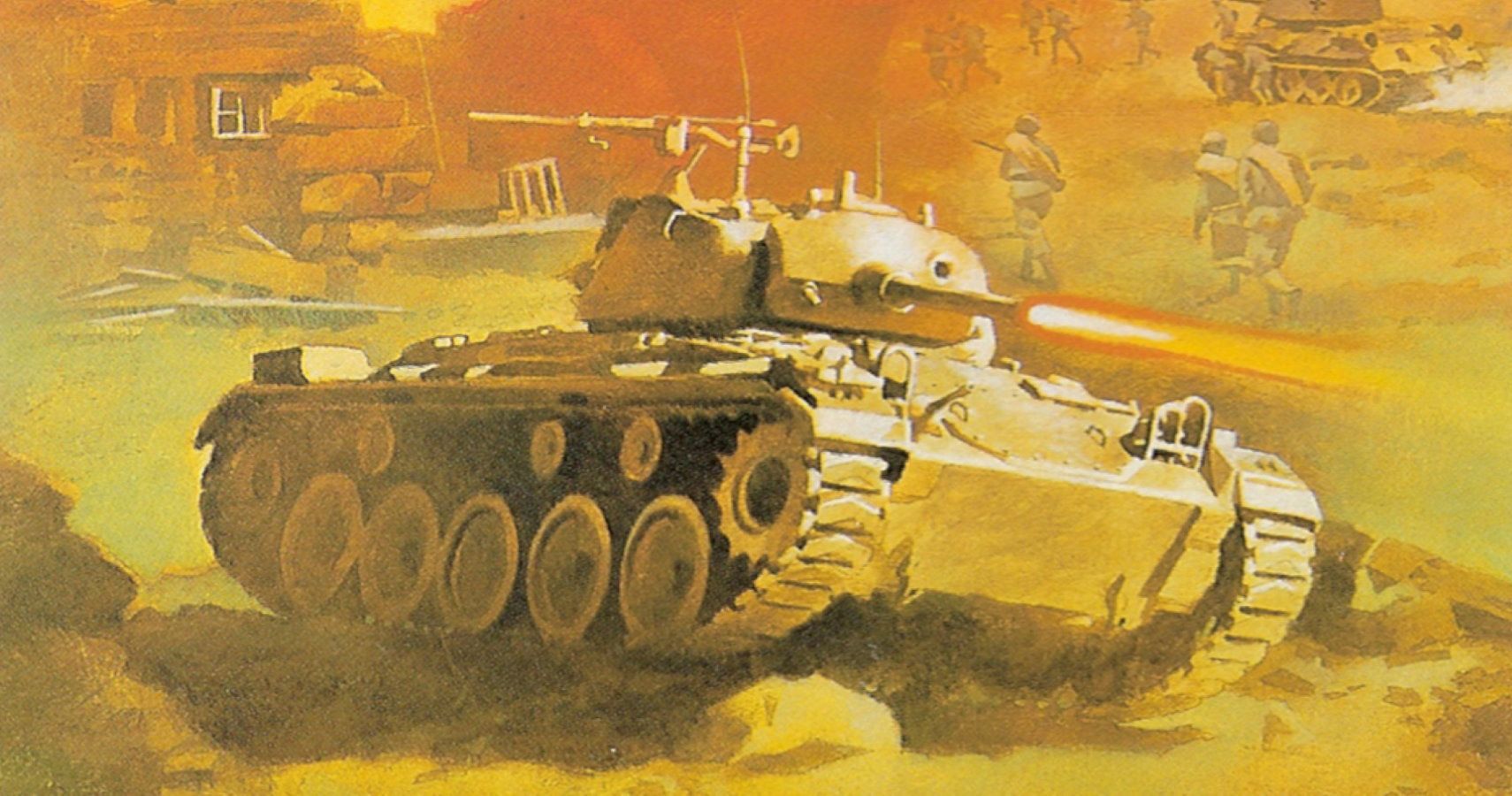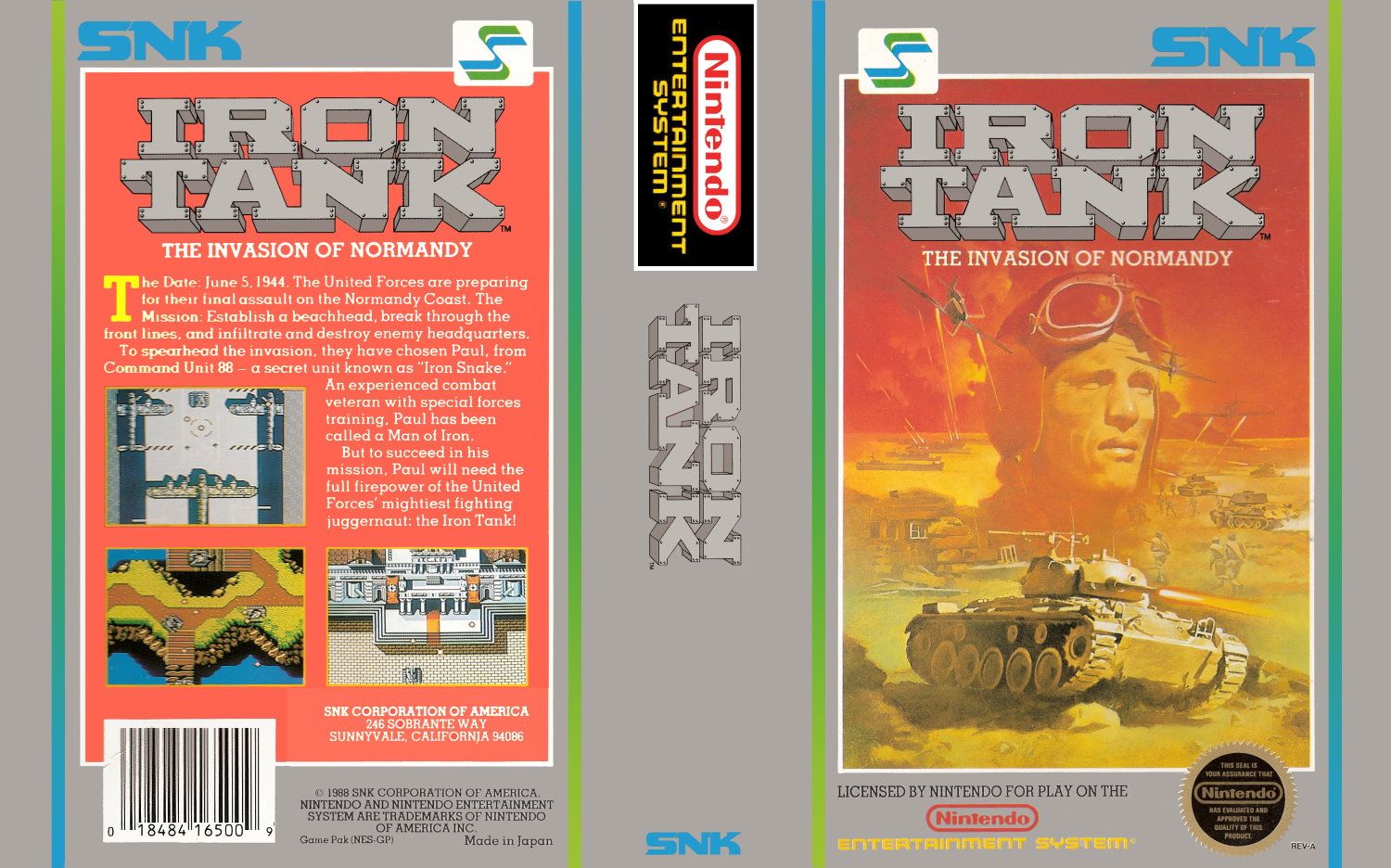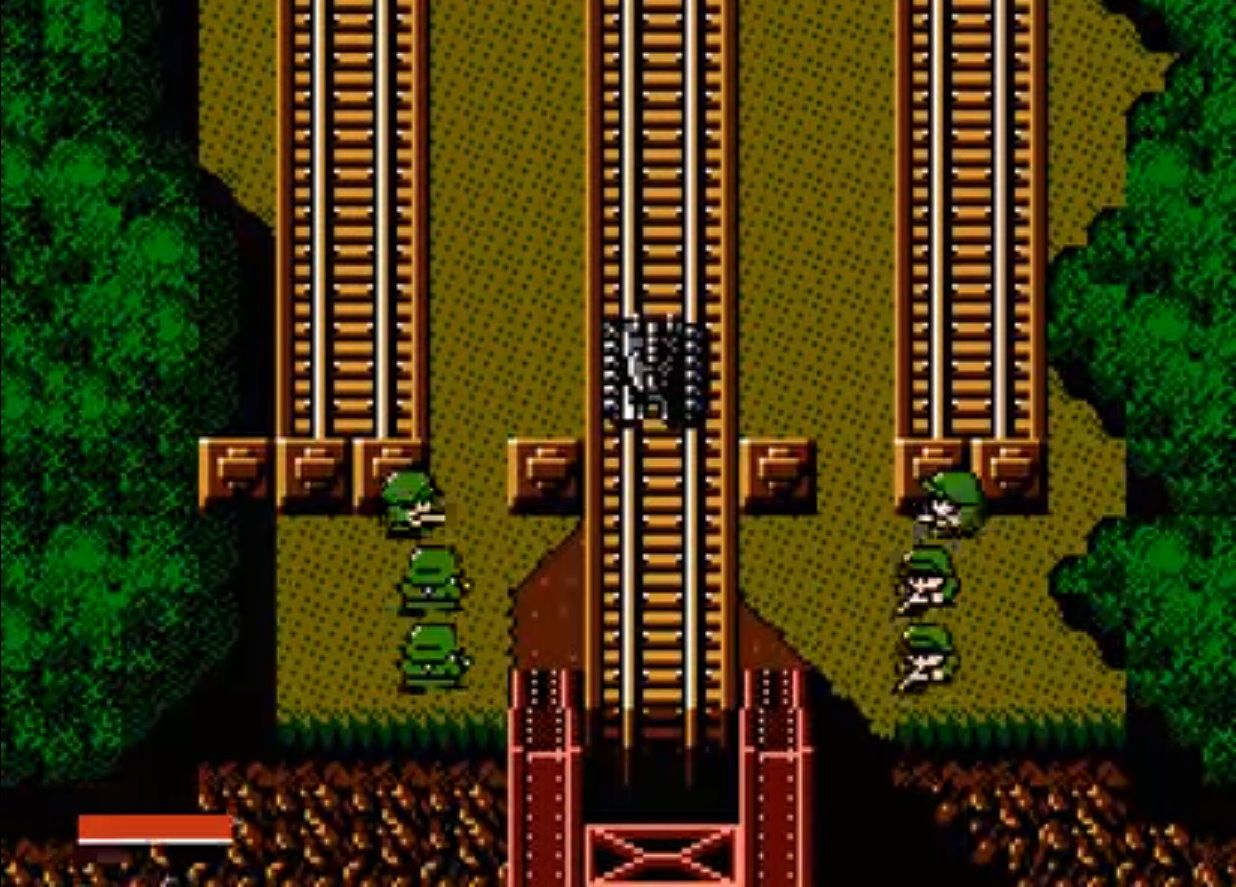I have a confession to make. I was afraid of Mario. Not the character, the game. As a four-year-old boy, Super Mario Bros. scared the ever-loving sh*t out of me. There are loads of weird alien monsters trying to kill you by turning you into a dwarf and ending your life by making you plummet off-screen. And the fiery dungeon where Bowser lived? The most terrifying thing I'd ever seen in my short life. That music still haunts me to this day.
So my defining childhood game was NOT Super Mario Bros. It was Iron Tank.
Most of you are probably asking, "What the heck is Iron Tank?" Glad you asked. Time for a trip down memory lane.
Great Tank
Iron Tank (or Great Tank as it was called in Japan) was a game made by then-fledgling publisher SNK. Although SNK would later make a name for itself with flashy fighting games and over-the-top shooters, Iron Tank was a continuation of the company's success in coin-operated arcade shooters that, believe it or not, had an actual plot. Many early SNK shooters were based on historical events, with Iron Tank predecessor Guerrilla War being based on South American and Caribbean communist uprisings (Guerrilla War's main characters are actually named Fidel Castro and Che Guevara in Japan, but are just unnamed heroes in the North American version).
I really loved Guerrilla War, too, but it never sold that well on the NES. Hoping to make things a little more palatable for the lucrative North American market, SNK decided to go to a more heroic time in American history and based Iron Tank on the Allied invasion of Normandy.
You play as a commando named Paul and are given the codename "Snake" (no relation to Metal Gear's Snake, who first graced screens one year later in 1987). Paul and the titular Iron Tank are tasked with sneaking behind German lines in order to disrupt enemy operations, eventually invading Berlin and taking out a giant enemy super tank before it could be unleashed on the Allies fighting in France.
Iron Tank is, of course, no ordinary tank. It's able to power up its main cannon by running over lettered tiles in the game world, and it can repair itself in the field by running over enemy soldiers (revealing another suitable title for the game: “Vampire Tank”).
All the game's art and pixelated enemies were based on real WW2 tanks and aircrafts. There's even a boss you could face based on the Schwerer Gustav railway artillery gun, depending on which path you take to Berlin.
If there's one thing that was unique in Iron Tank, it was the fact there were multiple paths you could take to your objective. The game's menu features a map that shows you which path you're on and when you'll meet enemy fortifications, cities, or bases. You can never go backwards, but you can take any of the branching paths to carve your way to Berlin. This gave Iron Tank something that very few early NES titles had: replayability. There are at least a dozen different paths you could take to the end, and even though each playthrough could be completed in roughly 30 minutes by a skilled player, that variety made Iron Tank far more enjoyable than any of its contemporaries.
A Gateway To Grander Things
It was also one of the few things that my father and I bonded over when I was a kid. My dad was a big war buff (something he got from his grandfather) and that sort of rubbed off on me. I remember spending hours passing the controller back and forth with my dad whenever he had time to spare on the weekends. We'd both rent Iron Tank from the local video store and play it all afternoon long. It was a tradition that continued into my Sega Genesis years, but eventually tailored off as my tastes grew to encompass more than just war games. Dad was never interested in the likes of Sonic the Hedgehog, and so as my interests in games widened, our personal version of tossing the ball around the yard faded.
But it’s something that I’ll always take with me. My love for more modern war-based titles like Ace Combat 7 can be directly traced back from Call of Duty, to Counter-Strike, to old NES games like Sky Shark, Guerrilla War, and of course, Iron Tank. And even though I’ve certainly grown to love way more genres, I’ll always come back to this one. And I’ll always be able to tell the difference between a Panzer IV and an M-24 Chaffee.
And Mario will always scare the shit out of me.




